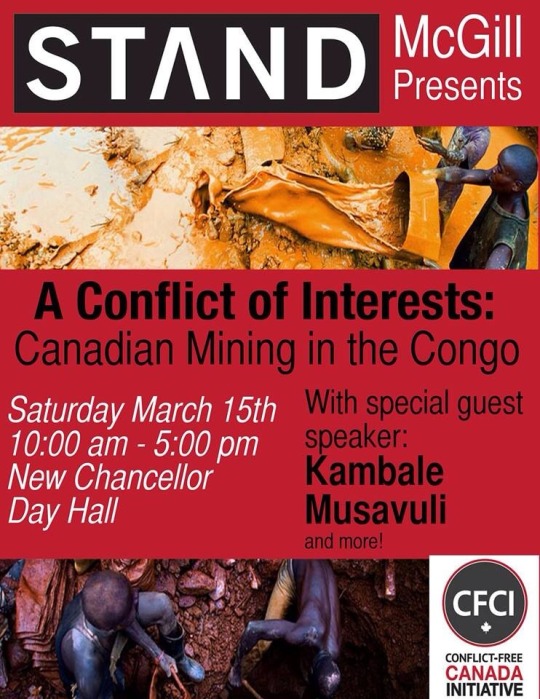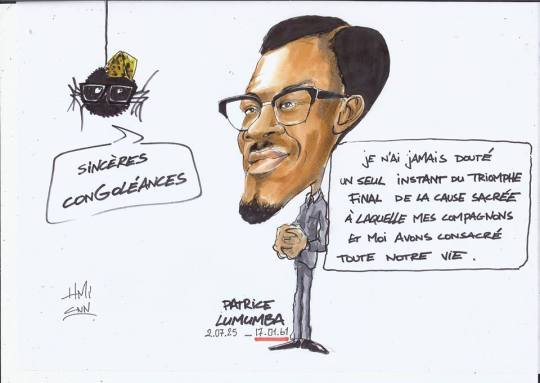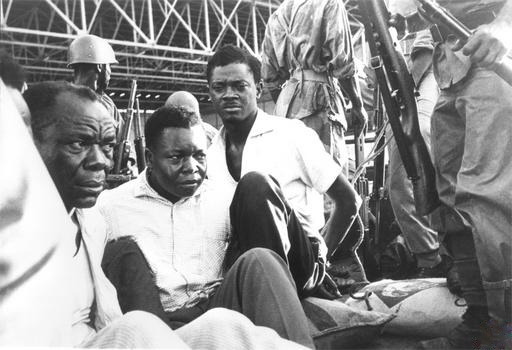Text
A message to young Congolese....
There may have been days when you felt that there was not much you can do to change the situation back home (and for those on the ground, right where you are). There may have also been time where you wanted to do something and did not know what to do. Even so, you may have taken actions and felt that it did not matter… You probably asked yourself is our country cursed?
If you fall in any of these categories,
Read More
28 notes
·
View notes
Link
"AngloGold Ashanti was just one of many corporations implicated in atrocities at the peak of violence in the DRC conflict. The UN Panel of Experts had in 2002 already named eighty-five foreign companies—ranging from Cabot and H.C. Starck to De Beers (the world’s largest diamond company) and...
17 notes
·
View notes
Text
BOOST! We all benefit from the conflict in Congo, the leats we can do is share the truth!
I have laid out the facts... I have just told you that American companies were reported to the US government for pilfering Congo's resources.
Will you read a long post? That is my hope… because it is all tied up with Tufts University, Paul Kagame and why we must pressure our government here in the US to not use our tax money to cover for companies and dictators.
If you read the whole thing, like the post, leave a comment and share.
" Around the middle of the Second Congo War (which ended in 2003), speculation in international markets caused a spike in the price of tantalum, which shot up nearly ten times over the course of the year 2000 before dropping back to its initial price by late 2001. These were the heady days of the dot-com boom, and two of the world’s largest tantalum processors—Cabot and H.C. Starck—had set up long-term contracts with their suppliers in an effort to corner the market in gadget-bound tantalum
Read More
#Congo#DRC#CONFLICT#TUFTS#tufts university#USA#PAUL KAGAME#BOSTON#POTUS#OBAMA#Uganda#RWANDA#KINSHASA#KAMPALA#KIGALI
37 notes
·
View notes
Photo

Come out this Saturday to find out the role Canada plays in our worlds greatest war. More than 6 million Congolese have perished since 1998 due to a resource war that not only is beneficial in the manufacturing of new gadgets but also in making drones and advanced military equipments.
#KONGOEVENT#MONTREAL#CANADA#MCGILL#UQAM#UDEM#CONCORDIA#KAMABLE MUSAVULI#CONGO DRC#DRC#RWANDA#QUEBEC#FRIENDSOFTHECONGO
5 notes
·
View notes
Link
People & Power goes behind the scenes with UN peacekeepers who are shifting their rules of engagement in the DR Congo.
0 notes
Link
It was half past five on a Monday morning in February 2003 when the first men arrived. They ran to the centre of the village carrying machetes and spears and rifles. Some invaded the houses and shot residents in their sleep, others cut them up with their machetes; another group set the huts on fire and burnt the families alive.
As time went by, the commanders of the group put some chairs under the mango trees close to the village and began to drink beer. By the end of the afternoon, dead bodies of around 200 people were scattered on the ground; and the commanders were drunk.
This is how the prosecutor at the International Criminal Court (ICC) describes the attack on Bogoro, a village in the Eastern part of the Democratic Republic of Congo (DRC). According to the prosecutor's team of investigators and lawyers, the attack is only one of many events that make the conflict in Central Africa one of the bloodiest since World War II. For almost ten years the ICC team has been building a case against the alleged perpetrators of this particular attack. Now the final stage has been reached.
On March 7 the judges at the Netherlands-based court will deliver their ruling in the case against Germain Katanga, allegedly a leader of one of the groups that committed the attack on Bogoro.
2 notes
·
View notes
Link
On Friday 7th and Sunday 9th of February, the Congolese opposition leader Vital Kamerhe and a delegation of his party tried to take a plane from Kinshasa to Goma, to complete a tour through eastern Congo. The authoritiesprevented his departure twice. There was also a strange indictment against him for an old case of defamation brought by MP Wivine Moleka. It’s possible that Kamerhe will now face a trial and up to 3 years imprisonment. Is Kabila’s former right hand man now becoming public enemy numbervi one?
0 notes
Link
Analysis of Canadian owned producing mines in Africa in 2011 and 2012.
Canadian Mining in Africa
Canada is a global mining giant and a leading player in Africa’s mining sector. 70% of the equity capital raised globally by the mining industry was raised on the Toronto (TSX) and Venture (TSXV) exchanges. Of the $10.3 billion in equity raised for mining on the TSX and TSXV in 2012 $1.9 billion or 18.5% was for projects in Latin America while another $1.7 billion or 16.5% was for projects in Africa.
The total estimated revenue yield, calculated as total mine production X international price of the commodity in the given year, for all Canadian owned properties in production in Africa in 2012 was $ 12.9 billion.
All mine sites are geocoded to precise locations, and sized according to revenue yield. Hover over points on the map to see more information including type of mine, name, and estimated revenue per commodity. Bar graphs based on company and country, as well as the commodity legend can be used to highlight mining operations.
2 notes
·
View notes
Link
WASHINGTON â The growing demand for new technologies, questionable supply lines and production in unfriendly or dangerous countries are putting NATO and allied militaries at risk of losing access to critical
• Cobalt. Primarily mined in the Democratic Republic of Congo (DRC), cobalt is used in alloys with other metals to make gas turbines and jet engines. The DRC has been troubled by civil war and rebellion since it gained independence from Belgium in the early 1960s. At least 5.4 million people have died there since 1998, many because of preventable diseases, according to a report by the International Rescue Committee.
• Tantalum. A rare, hard, blue-gray metal that is used in jet engines, nuclear weapons and missile parts. Its non-military uses include electronics as well as medical equipment and implants. The Democratic Republic of Congo is one of the world's largest sources of tantalum.
• Tungsten. The hard metal is often used in missiles and ammunition, while its non-military uses include fluorescent lighting and electronics. The world's main tungsten producers include China, the Democratic Republic of Congo and Russia.
3 notes
·
View notes
Note
I find it sad how the average black person knows more about the situation in Palestine than the genocide in Congo. This whole PoC solidarity actually hurts us at the end of the day because all we ever do is focus on the agenda of other people and not our own.
This is still gonna be a confession but I’m just publishing it here for emphasis. This shit is important.
~Chia
52 notes
·
View notes
Video
youtube
JJ Bola | Refuge | Curb Call | Spoken Word
1 note
·
View note
Link
YOU MUST PROTECT YOURSELF point blank period. You are putting yourself at risk. Stop thinking oh it ain’t gone be me up in the clinic looking stupid!
It only takes one time with someone you trusted.
And in that same vein. Stop the fucking shaming of people living with...
332 notes
·
View notes
Video
Congo na biso, mboka kitoko, to telema.
youtube
NEW ‘Le Congo’ par Leki - Intro: Lumumba speech 1960
6 notes
·
View notes
Video
youtube
Vibrez, dansez les fêtes avec Fresk 'Je suis désolé'
5 notes
·
View notes

